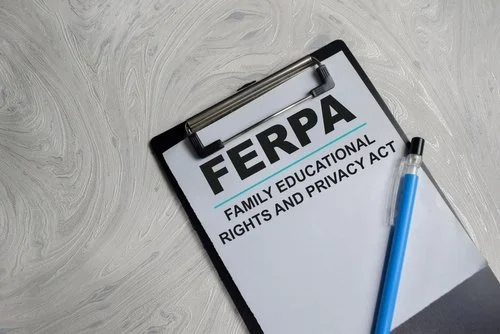FERPA debuted in the ’70s—an age of rotary phones, typewriters, manila folders—not exactly the dawn of digital communication. Because of that, FERPA’s original framework didn’t contemplate the advent and rise of Hotmail in 1996 (side note: if you still have your Hotmail account, impressive). Since that time, schools and courts have had to figure out how email communication (and DMs on Facebook) intersects with FERPA obligations.
Under FERPA, an education record is any record that (1) directly relates to a student, and (2) is maintained by the school district. 34 C.F.R. § 99.3. Back in the day, the concept of an education record was simple; it was the hard copies of information that the school locked away in a student’s file in its filing cabinet.
Questions in 2025 are different. With email, when does an email that includes a student’s name or school email address begin to relate to that student directly? At what point does a district “maintain” that record? As recently as April 2025, the Student Privacy Policy Office, the federal office tasked with FERPA compliance, recognized that the Department has not “issued any subsequent formal guidance or regulations that specifically addresses the applicability of FERPA to emails.” Letter to Monogue. However, a recent case out of Nevada sheds some helpful light on this very issue.
In the case Clark Cty. Sch. Dist. v. Eighth Judicial Dist. Court, No. 89127, 2025 Nev. LEXIS 66 (Nov. 26, 2025), the court looked at whether emails that are broadly stored in a district’s Google Workspace are education records. Even assuming an email “relates” to a student, the court reasoned that emails may constitute education records, but to be an education record, “the email relating to the student must be deliberately stored by the records custodian as part of that student's records.”
The word “deliberate” aligns with the historic understanding of what it means to “maintain” a record. It means that there is an intentional choice to “maintain” the email, as defined by policy. Emails that exist within the school’s email system lack that intentionality and, according to the court, were not “maintained”. The court further emphasized that just because an email mentions a student, that does not necessarily mean the email “directly relate[s] to and bear a close connection to the student.”
Now, even though this opinion is out of Nevada, districts in other states can walk away with a few important lessons from it.
Review your district’s policy. The court, in part of its reasoning, looked to the district’s definition of education record to support its finding that emails sent in the ordinary course of business were not automatically education records. Nowadays, there are all kinds of records (i.e., attendance and discipline file, grade books, student support services folder, etc.). Your policy should focus on what it means to “maintain” a record, rather than focusing on the type of record.
Routine storage in email servers/databases is not the same as intentional maintenance, assuming your policy defines maintain appropriately. It may be helpful to chat with your tech person to understand better the life of an email in your district’s digital domain. Clarify with staff what it means to “maintain” records based on your policy.
Emails CAN be education records, even if not specifically identified in your district’s policy. Whether an email is an education record comes down to that fundamental definition: it must (1) directly relate to the student and (2) be maintained. There may be instances where an email (for example, an email sent by an administrator documenting a disciplinary incident and saved in a student’s disciplinary file) is an education record.
As always, if you have questions, email us at ksb@ksbschoollaw.com, and we may or may not promise that your email will become part of your KSB education record.


